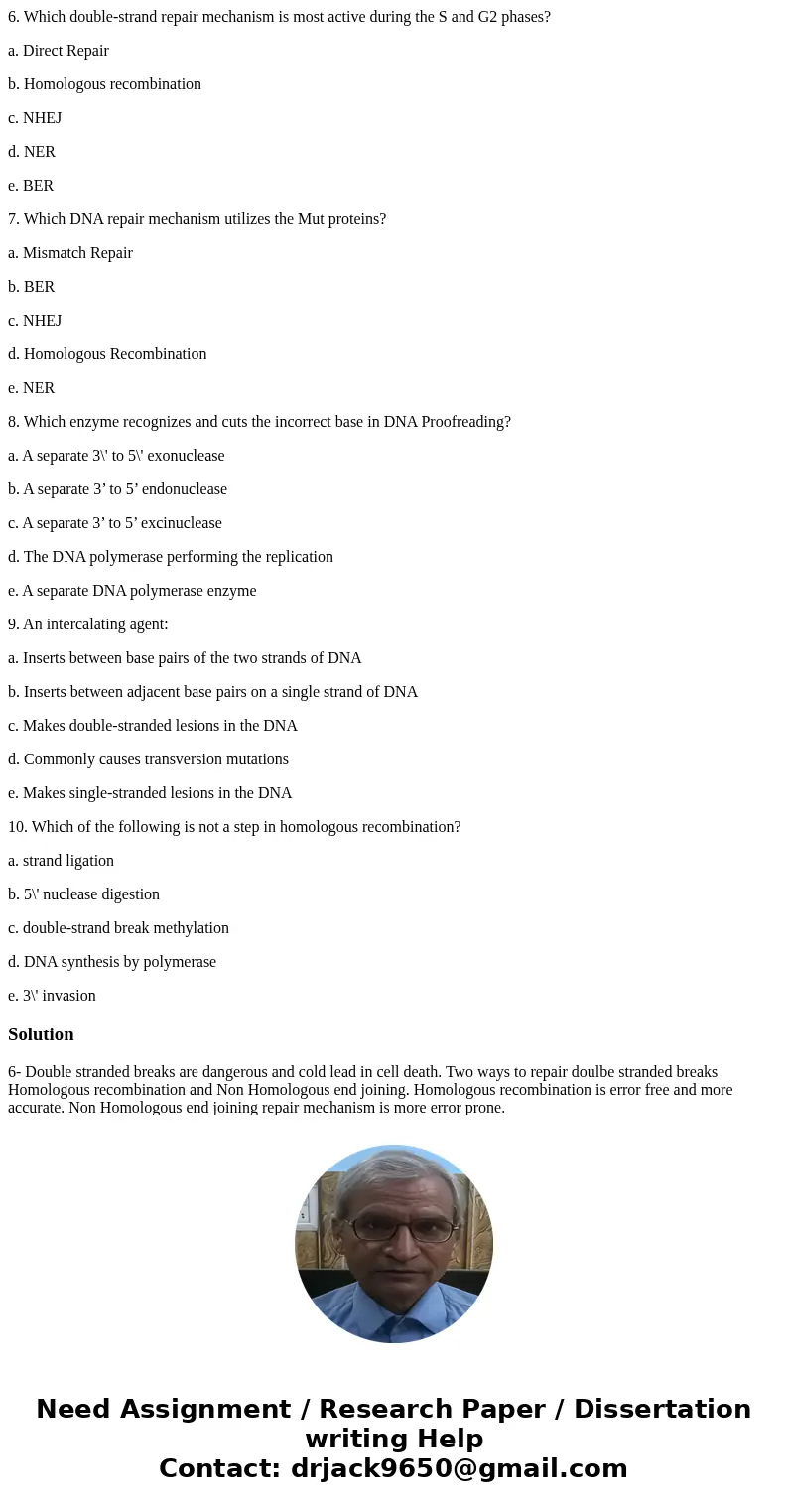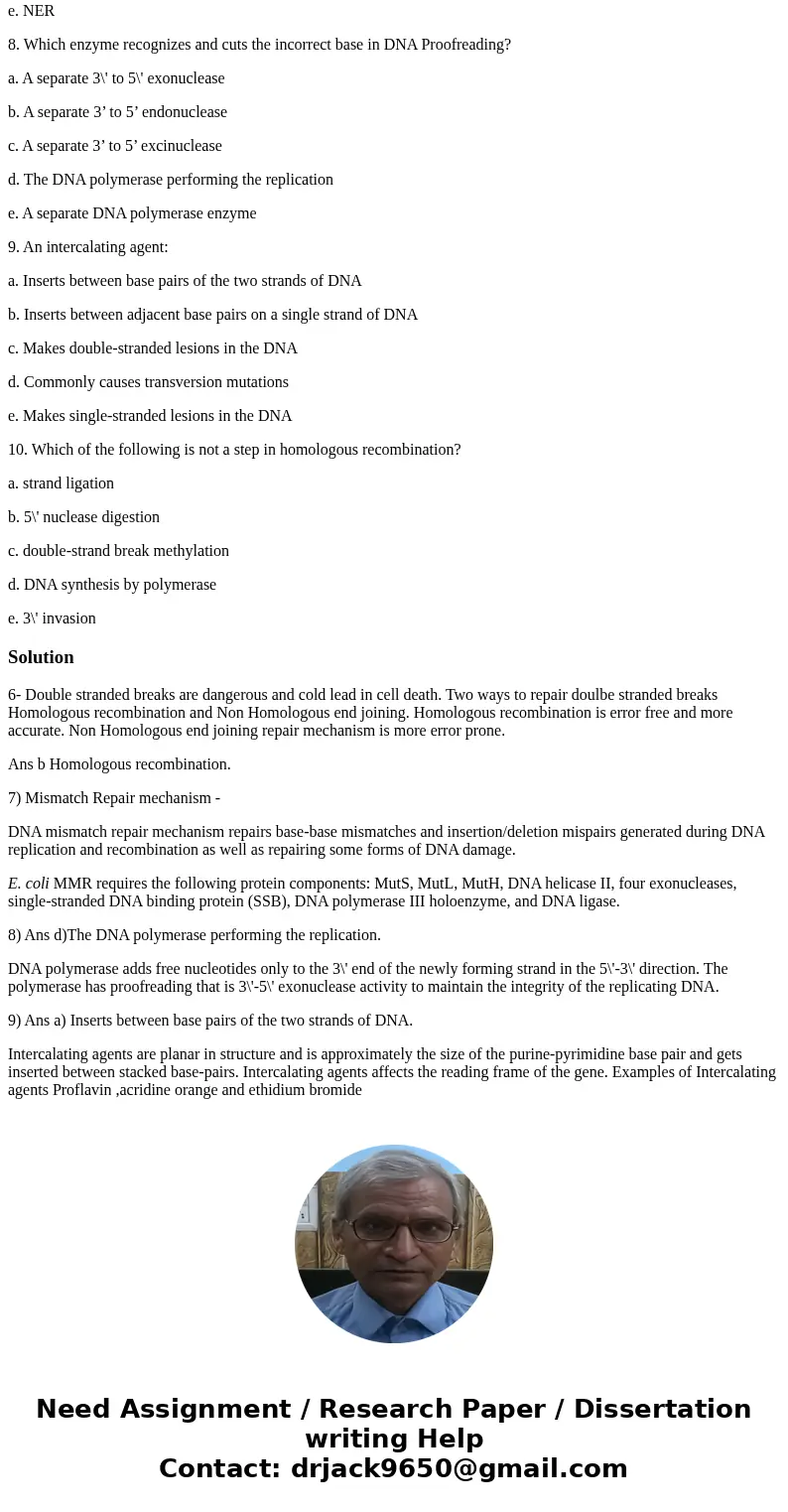6 Which doublestrand repair mechanism is most active during
6. Which double-strand repair mechanism is most active during the S and G2 phases?
a. Direct Repair
b. Homologous recombination
c. NHEJ
d. NER
e. BER
7. Which DNA repair mechanism utilizes the Mut proteins?
a. Mismatch Repair
b. BER
c. NHEJ
d. Homologous Recombination
e. NER
8. Which enzyme recognizes and cuts the incorrect base in DNA Proofreading?
a. A separate 3\' to 5\' exonuclease
b. A separate 3’ to 5’ endonuclease
c. A separate 3’ to 5’ excinuclease
d. The DNA polymerase performing the replication
e. A separate DNA polymerase enzyme
9. An intercalating agent:
a. Inserts between base pairs of the two strands of DNA
b. Inserts between adjacent base pairs on a single strand of DNA
c. Makes double-stranded lesions in the DNA
d. Commonly causes transversion mutations
e. Makes single-stranded lesions in the DNA
10. Which of the following is not a step in homologous recombination?
a. strand ligation
b. 5\' nuclease digestion
c. double-strand break methylation
d. DNA synthesis by polymerase
e. 3\' invasion
Solution
6- Double stranded breaks are dangerous and cold lead in cell death. Two ways to repair doulbe stranded breaks Homologous recombination and Non Homologous end joining. Homologous recombination is error free and more accurate. Non Homologous end joining repair mechanism is more error prone.
Ans b Homologous recombination.
7) Mismatch Repair mechanism -
DNA mismatch repair mechanism repairs base-base mismatches and insertion/deletion mispairs generated during DNA replication and recombination as well as repairing some forms of DNA damage.
E. coli MMR requires the following protein components: MutS, MutL, MutH, DNA helicase II, four exonucleases, single-stranded DNA binding protein (SSB), DNA polymerase III holoenzyme, and DNA ligase.
8) Ans d)The DNA polymerase performing the replication.
DNA polymerase adds free nucleotides only to the 3\' end of the newly forming strand in the 5\'-3\' direction. The polymerase has proofreading that is 3\'-5\' exonuclease activity to maintain the integrity of the replicating DNA.
9) Ans a) Inserts between base pairs of the two strands of DNA.
Intercalating agents are planar in structure and is approximately the size of the purine-pyrimidine base pair and gets inserted between stacked base-pairs. Intercalating agents affects the reading frame of the gene. Examples of Intercalating agents Proflavin ,acridine orange and ethidium bromide


 Homework Sourse
Homework Sourse